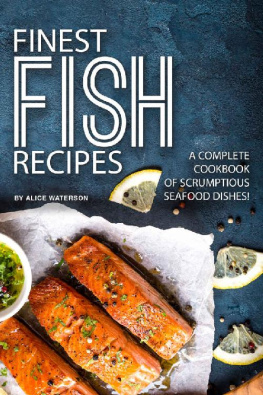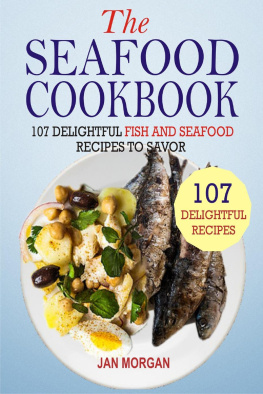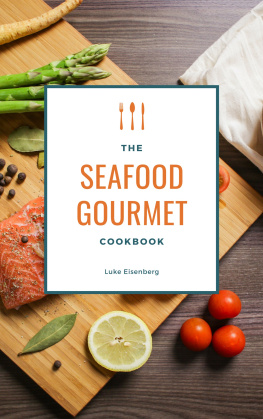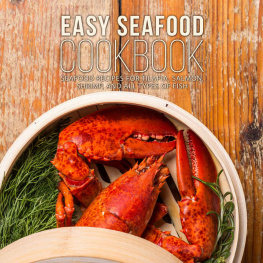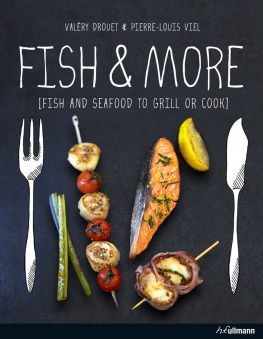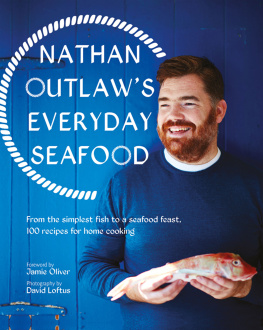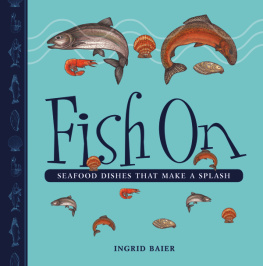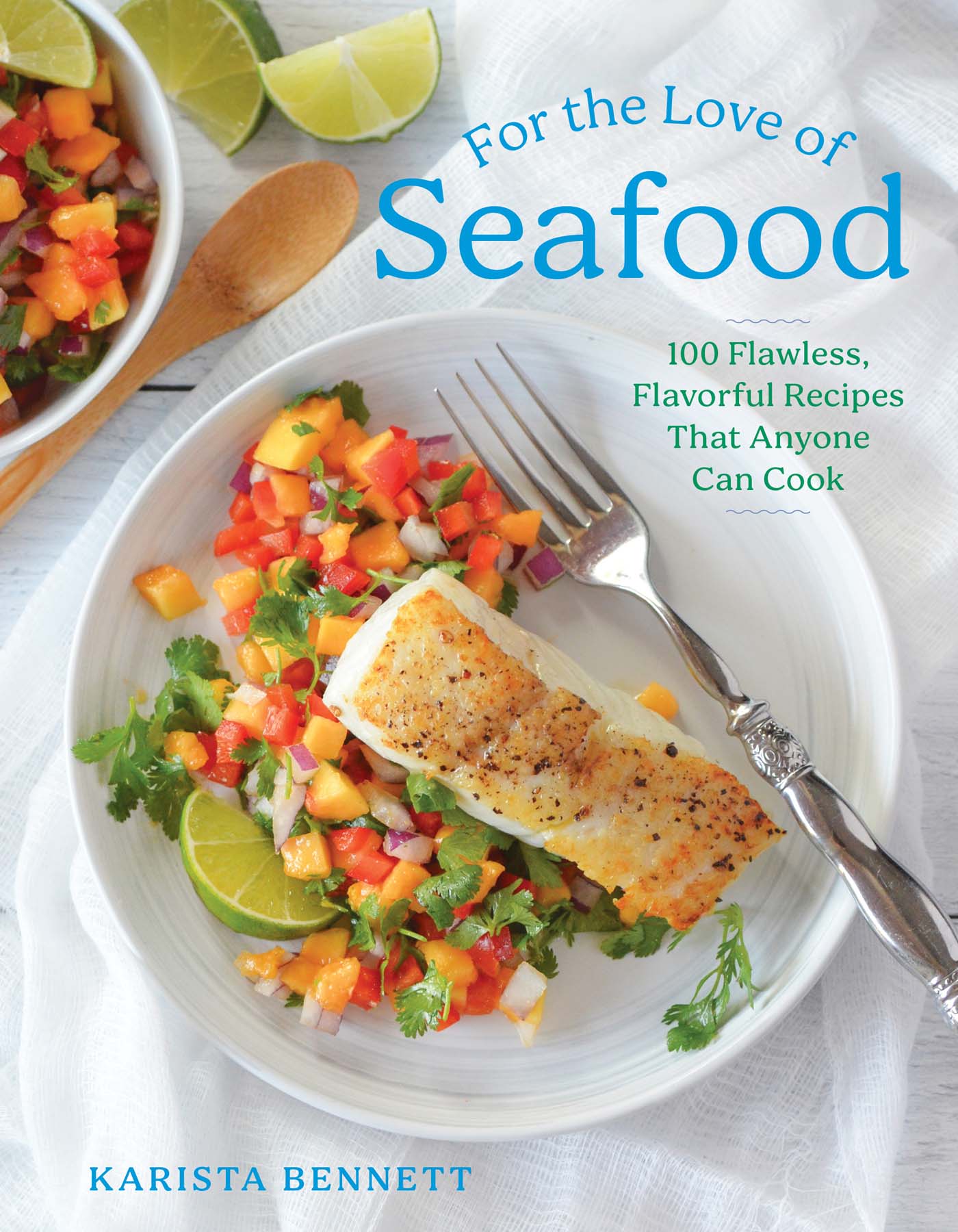Contents
Guide
Page List
For my sister, Kristin, and my brother, Cameron
Contents
If you are going to follow links, please bookmark your page before linking.
I HAVE A CONFESSION to make: I didnt always like seafood. As a child, my preferred seafood of choice was a popular chain restaurant fish and chips with a healthy dose of malt vinegar and tartar sauce. As a teenager, my friends and I used our community Friday Night Catfish Fry as a convenient hangout where inevitably I filled my plate with mostly hush puppies and coleslaw. And although I am certain there were assorted seafood offerings at our community potlucks and socials, my unadventurous palate always led me straight to the potato salad.
It wasnt that I found seafood completely objectionable, but more that the flavor and texture didnt excite my taste buds. This could be due to all those bland and mushy fish sticks I ate as a child or one too many stinky tuna salad sandwiches from the school cafeteria.
When I reached adulthood, seafood was still not my first choice for dinner. It wasnt until my seafood-loving husband asked me to try the most amazing pan-cooked fillet of red snapper, which forever altered my idea of seafood.
It was my husbands birthday and, because fish is his entre of choice, he opted for a small seafood bistro in town. My face told him I was delighted, but my food-loving heart died a little inside. However, as we walked into the restaurant, I saw that the tables were covered in soft, white tablecloths and candlelight flooded the cozy dining room. It was warm and inviting, and as we were seated, I felt more reassured that I just might enjoy my dinner that evening.
When our entres arrived, I could see that the fish had been carefully, and what felt almost reverently, prepared. It was tender on the inside yet perfectly crisp in the faintest golden-brown crust. It was topped with succulent jumbo lump crabmeat and drizzled with a luscious lemon beurre blanc sauce. From the first bite, I was utterly smitten.
My curiosity flourished from that point, and several years later, I gratefully found myself in a seafood class at culinary school. This was the course that changed the way I approach seafood. During that class I realized seafood is like a blank canvas. It can be paired with a vast array of ingredients and incorporated into recipes as simple or as complex as I choose. My love of seafood may have begun with that gorgeous pan-cooked snapper, but understanding how to use the salty, sometimes briny, and buttery essence of seafood with complementary ingredients delighted my flavor-loving palate.
Over the last 20 years, Ive had the opportunity to practice, develop, and prepare a multitude of seafood recipes for clients of my private chef business, readers, my home cook students, and my family and friends. Ive been lucky enough to have lived in a handful of culturally and geographically diverse locations within the United States, including the Gulf Coast, the East Coast, and the Pacific Coast, which is now home. Each location is unique in cuisine and local ingredients, and all contributed to my culinary journey and love of flavor.
In For the Love of Seafood, you will find 100 enchanting seafood recipes that anyone can cook. I know that sounds like a tall order; however, the book is broken down into three chapters, starting with simple and moving into modestly easy and eventually kind of fancy dishes. Theres really something here for everyone. In each chapter, I give detailed instructions on cooking methods that are best for a particular seafood, along with seasonal ingredient pairings, recommendations, and substitutions so that every seafood recipe is achievable and satisfying.
Although seafood is a staple in my own home kitchen, my love and respect for the sea and local fisheries and fishing families continues to be at the center of my seafood purchases. In the chapters to follow, I share my experience, knowledge, and resources to inform, inspire, and build confidence in purchasing and preparing seafood.
From the very beginning, I wanted to make this book a culinary adventure in flavor-filled seafood. Recipes that anyone can cook but can also wow the taste buds as intensely as mine were when I tasted that brilliant red snapper so many years ago.
My hope is that this is the beginning of your love affair with our precious fruits from the sea.
With love and peace from my table to yours,

I BEGIN THIS BOOK with a section called Seafood 101. This section addresses some of those nagging seafood questions, such as What do I look for when buying seafood? and How do I know it was sustainably sourced? as well as What kind of fish are considered mild, flaky white fish? and What ingredients pair best with seafood?
Seafood 101 is a little bit like cooking class and a basic seafood primer, all in one. It is meant to be your go-to guide whenever you have questions about a cooking method, ingredient pairing, flavor and texture profiles of fish, fish purchases, equipment, and more.
Then, the three recipe chapters are arranged according to skill level, Easy Like a Weeknight is the first, filled with recipes perfect for beginner home cooks, cooks new to seafood or cooks looking for a quick seafood meal.
This first chapter is arranged by cooking technique and begins with the simplest of seafood recipes. And although the recipes are easy, they do not fall short in flavor. As you move through this chapter, the recipes build in cooking techniques from baking, then steaming, to roasting. Toward the middle of the chapter, we tackle pan cooking and then poaching. At the end of this chapter, we cover the basics of cooking shellfish.
The second recipe chapter, Show Off Those Skills, adds a few more cooking techniques, new ingredient pairings, and a little more prep time, and introduces new types of seafood to use. This chapter is arranged according to type of seafood. It begins with shellfish, then moves into salmon, ahi tuna, swordfish, and anchovies. The last half of this chapters recipes are prepared with various types of white fish.
The third recipe chapter is titled A Little Fancy. This chapter is also organized according to type of seafood, beginning with shellfish. From there, recipes move to anchovies, salmon, trout, then mixed seafood, and end with white fish. This last chapter is filled with my version of some traditional favoritesrecipes that require more time in the kitchen, contain a wider variety of ingredients, and are a bit more special. These are the dishes I prepare for family dinners, date nights, holidays, and celebrations.
I end this book with a list of resources that will help you source ingredients, online sustainable seafood resources, community-supported fisheries, and additional sources of seafood information.
And now, lets get cooking!


